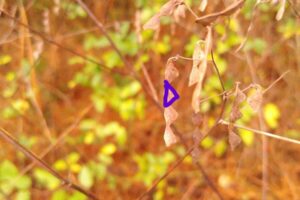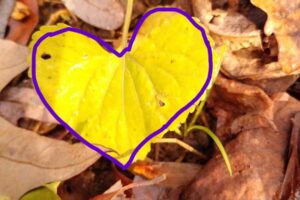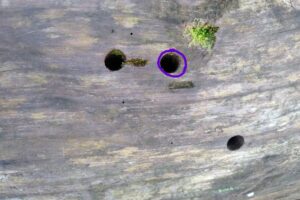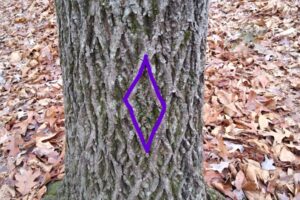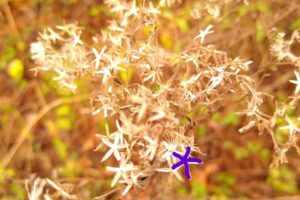A Getaway in the Middle of It All
December 22, 2022 9:20 am

By Ellen Powell, VDOF Conservation Education Coordinator
Are you looking for a family day trip during the school holidays? Consider the Conway Robinson State Forest in Gainesville, where you can slow your pace and your kids can expend some year-end energy.
Imagine more than 400 acres of woodland placed right next to sprawling subdivisions, near the busy junction of Interstate 66 and US Route 29. That’s the “Con Rob” (as we in VDOF often call it, for short.) Named for a 19th century lawyer/historian/delegate/author, the property became a state forest in 1938. At the time, Route 29 was just a dirt track through a sparsely populated area, and VDOF reluctantly accepted the property amid concerns that no one would go there. Today, it’s a shady oasis in a bustling developed area, popular with hikers, bikers, and birders.
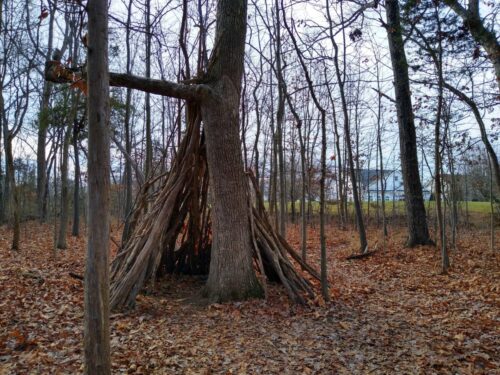
The forest is a natural playground for kids from the neighboring subdivision.
On a recent mild winter day, I took a hike at the Con Rob, on my way to the madness of holiday shopping in northern Virginia. The blue trail is the longest – a little over 3 miles – but you can shortcut it with some of the other trails. The forest topography is mostly flat, and some spots can get muddy in wet weather. I found the paint-blazed trees marking the trail easy to follow, but it’s always good to take a photo of the map at the kiosk before you start a hike.
During my walk, I knew I’d be taking pictures for this blog post. Since winter woods can look a bit drab to adults, one of my objectives was to see the forest through the eyes of a child. I used one of the free family activities from Project Learning Tree to guide my photography. The Shape of Things provides a good lesson in detailed observation – a cornerstone of both art and science. While I didn’t wear a “shape necklace,” I did find some fun shapes in the forest:
- Square (ish)
- Triangle
- Heart
- Circle
- Diamond
- Star
Part of what makes the Conway Robinson special is its urban location. Forested areas in cities and communities provide services to people and the environment as a whole. Urban forest benefits include wildlife habitat, air quality, water filtration, soil protection, recreation, and scenic beauty, to name a few.
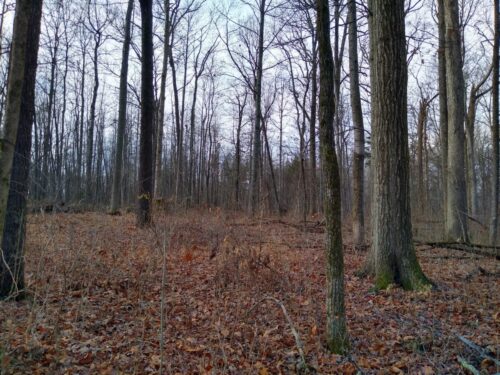
Hardwood stand with plenty of growing room
Despite its heavy recreational use, the Con Rob is also a managed forest that produces timber. Some of the hardwood (deciduous) stands show the results of a management practice called timber stand improvement (TSI). This practice removes competing trees, allowing selected desirable trees more room to grow. TSI can also encourage regeneration of oaks or other favored species.
There are also managed pine stands on the forest, including mature loblolly pine and younger planted shortleaf pine. Shortleaf is a diminished species in Virginia, so VDOF is helping to restore it to appropriate sites. Personally, I find it relaxing to walk under tall, stately pines, enjoying the breeze through the branches and the evergreen scent of pine needles underfoot.
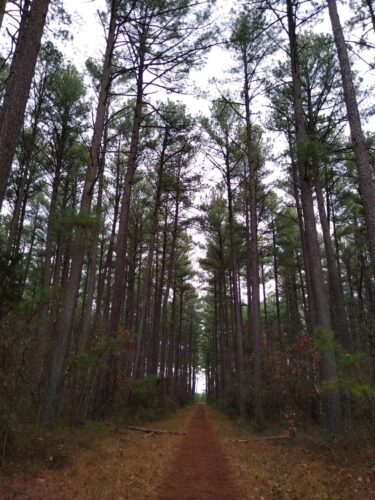
Path through the pines
State forests in general tend to be peaceful places. Most were established for multiple use management, making them different from state parks. If you are used to visiting parks, you may miss certain amenities, such as onsite staff, visitor centers, trash cans, and (gasp!) restrooms when you visit a state forest. But in the case of Conway Robinson, you can always find bathrooms not too far away – a side benefit of the forest’s proximity to suburbia. While you’re in the area, you can also take in some history at Manassas National Battlefield Park, which is just a mile east of the state forest.
If northern Virginia is too far to travel, fear not: wherever you live in Virginia, there’s probably a state forest near you. Check the map, grab your hiking boots, and take your family on an adventure this holiday season, or any time of year.
Tags: State Forests, Urban Forestry
Category: Education, State Forests


